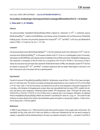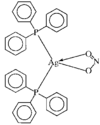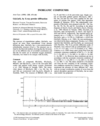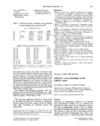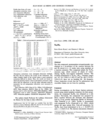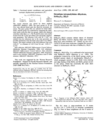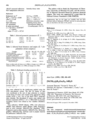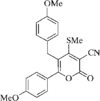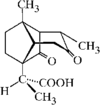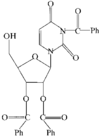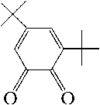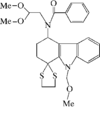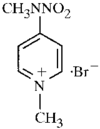issue contents
April 1999 issue

Cover illustration: [N(CH3)4]4H12Ge9O26.14H2O, see Tripathi, Young Jr, Johnson, Cahill & Parise, pages 496-499. Displacement ellipsoids are shown at the 75% probability level.
cif-access (inorganic compounds)
Download citation


Download citation


The anion in the title compound, prepared in aqueous solution from Ni2+ and preformed [Bi2W22O74(OH)2]12–, is identical to the anion obtained as the Na10 salt from Bi3+, WO42– and Ni2+ [Rodewald & Jeannin (1998). C. R. Acad. Sci. Ser. IIc, 1, 175–181].
cif-access (metal-organic compounds)
Download citation


Download citation


The title compound, trans-[PdCl2(PPh2Me)2], was obtained serendipitously. The Pd atom lies on an inversion center, with distances Pd—Cl of 2.3045(9) and Pd—P of 2.3306(12)Å, and a Cl—Pd—P angle of 89.72(3)°.
Download citation


Download citation


The structure of the title compound has been redetermined and shown to be a mixed water–ethanol solvate rather than the hydrate reported previously [Ng & Othman (1997). Acta Cryst. C53, 1396-1400].
Download citation


Download citation


In the unsolvated crystal structure of the title compound, the nitrito ligand is symmetrically bonded to the silver ion, in contrast to the unsymmetrical coordination reported previously for the dichloromethane solvate.
Download citation


Download citation


In the title compound, the metal center has a distorted pentagonal–bipyramidal geometry, with angles in the pentagonal plane ranging from 70.5(1) to 149.2(1)°. The W—C bond lengths are in the range 1.991(3)–1.999(3)Å, and the W—N bond lengths are in the range 2.149(2)–2.215(3)Å. The six phenyl rings have average C—C bond lengths ranging from 1.382(5) to 1.390(5)Å.
cif-access (organic compounds)
Download citation


Download citation


The title compound, 2-isopropyl-5-methyl-cyclohexyl toluene-4-sulfonate, belongs to the group of cyclohexane benzenesulfonates. In this group of compounds, the torsion angle between the two rings never has a trans conformation.
Download citation


Download citation


The title compound contains a quinoxaline ring system, which is used as a building block for colourants, stabilizers in the food industry, bactericides and tranquilizers.
Download citation


Download citation


The title compound contains an anthracene ring system with an ethylene group attached at position 9. The angle between the aromatic ring system and the ethylene moiety is 68.06(5)°.
Download citation


Download citation


The title compound exists as the trans isomer. The dihedral nobreak angle between the phenyl and imidazole rings is 18.4(1)° and the N=N bond distance is 1.258(2)Å. In the solid state, N—H⋯N intermolecular hydrogen bonds link the molecules to form an infinite one-dimensional chain along the [101] direction.
Download citation


Download citation


The title compound belongs to the family of 5-substituted cyclooctanone derivatives having a boat–chair conformation. The packing is characterized by stacks of hydrogen-bonded dimers.
Download citation


Download citation


In the title strained dispiro compound, the cyclobutane unit is planar. The cyclopropane units are perpendicular to the cyclobutane plane.
Download citation


Download citation


The title compound belongs to the family of benzo-annulated cyclobutenes. Perfluorination of 1,2-dihydrocyclobutabenzene leads to essentially the same geometry as the parent hydrocarbon. Bond localization due to the Mills–Nixon effect in the direction of one of the Kekule forms cannot be found.
Download citation


Download citation


The title compound was obtained by reaction of pyrido[2,1-c][1,4]benzodiazepine in boiling phosphorus oxychloride with a catalytic amount of pyridine under microwave heating. Its structure determination establishes the mechanism of the reaction, which was otherwise uncertain.
Download citation


Download citation


The title molecule is U-shaped. The molecules are connected by O—H⋯S and O—H⋯O hydrogen bonds to give a two-dimensional network.
Download citation


Download citation


The title compound, 2,4-(PPh3)B10H8.CH2Cl2, has a closo-decaborane framework in which two triphenylphosphine groups substitute two equatorial H atoms, with B—P bond lengths of 1.927 (4) and 1.910 (4) Å.
Download citation


Download citation


The title compound crystallizes as a salt with hydrogen maleate. The iodoproxyfan cation is nearly planar and it forms N—H⋯O hydrogen bonds with two neighbouring hydrogen maleate anions.
Download citation


Download citation


The title compound, 2,2'-[(RS,SR)-3,4-diphenyl-2,5-diazahexamethylene]diphenol, which is a tetradentate Schiff base ligand, was prepared and the structure determined in order to investigate the conformation in a metal-free condition. In the crystals, the molecule has a center of symmetry and there is an intramolecular O—H⋯N hydrogen bond within each salicylideneimine unit.
Download citation


Download citation


The X-ray structure of highly estrogenic (–)-(Z)-bisdehydro- doisynolic acid, obtained via the L-menthyl ester of its 3-methyl ether, i.e. L-menthyl (–)-(1R,2S)-1-ethyl-7-methoxy-2-methyl-1,2,3,4-tetrahydrophenanthrene-2-carboxylate, shows that its configuration is 1R,2S and its three fused rings are nearly coplanar.
inorganic compounds
Download citation


Download citation


Gd3GaO6 is isostructural with Er3GaS6 (Cmc21). It contains distorted GaO4 tetrahedra and Gd atoms are in two sites of sevenfold coordination.
Download citation


Download citation


Strontium iron diphosphate was obtained from hydrothermal synthesis and its structure determined by single-crystal X-ray diffraction analysis. The main crystallographic feature is the 4+1 square-pyramidal coordination polyhedron around the Fe atom. The structure is built up from corner-sharing [FeO5] pyramids and [P2O7] bitetrahedral units.
Download citation


Download citation


Ta5Sb4 adopts the Ti5Te4 structure type, which consists of chains of vertex-sharing Ta6Sb8 face-capped octahedra.
Download citation


Download citation


SrMo4O13.2H2O is built up from layers of edge- and vertex-sharing MoO6 and MoO5 groups. Inter-layer Sr2+ cations and water molecules complete the structure, which is isostructural with that of BaMo4O13.2H2O.
metal-organic compounds
Download citation


Download citation


Download citation


Download citation


Download citation


Download citation


Download citation


Download citation


Download citation


Download citation


The {Ge9O14(OH)12}4- cluster contains a central GeO6 octahedron corner-linked to four GeO4 tetrahedra, which are in turn corner-linked to an adjacent tetrahedron and a GeO5 trigonal bipyramid. Each of the four trigonal bipyramids shares a common edge with another, and one vertex of each edge is connected to the central octahedron.
Download citation


Download citation


Download citation


Download citation


Download citation


Download citation


Download citation


Download citation


Download citation


Download citation


Download citation


Download citation


Download citation


Download citation


Download citation


Download citation


Download citation


Download citation


Download citation


Download citation


Download citation


Download citation


Download citation


Download citation


Download citation


Download citation


Download citation


Download citation


Potassium methoxyacetate tetrahydrate forms a network complex in which the K atoms are nine-coordinate.
Download citation


Download citation


Download citation


Download citation


Download citation


Download citation


Download citation


Download citation


Download citation


Download citation


Download citation


Download citation


Download citation


Download citation


Download citation


Download citation


Download citation


Download citation


organic compounds
Download citation


Download citation


Download citation


Download citation


Download citation


Download citation


Download citation


Download citation


Download citation


Download citation


Download citation


Download citation


Download citation


Download citation


Download citation


Download citation


Download citation


Download citation


Download citation


Download citation


Download citation


Download citation


Download citation


Download citation


Download citation


Download citation


Download citation


Download citation


Download citation


Download citation


Download citation


Download citation


Download citation


Download citation


Download citation


Download citation


Download citation


Download citation


Download citation


Download citation


Download citation


Download citation


Download citation


Download citation


Download citation


Download citation


Download citation


Download citation


Download citation


Download citation


Download citation


Download citation


Download citation


Download citation


Download citation


Download citation


Download citation


Download citation


Download citation


Download citation


Download citation


Download citation


Download citation


Download citation


Download citation


Download citation


Download citation


Download citation


Download citation


Download citation


Download citation


Download citation


Download citation


Download citation


Download citation


Download citation


Download citation


Download citation


Download citation


Download citation


Download citation


Download citation


Download citation


Download citation


Download citation


Download citation


Download citation


Download citation


Download citation


Download citation


Download citation


Download citation


Download citation


Download citation


Download citation


Download citation


Download citation


Download citation


Download citation


Download citation


Download citation


Download citation


Download citation


Download citation


Download citation


Download citation


Download citation


Download citation


Download citation


Download citation


Download citation


Download citation


Download citation


Download citation


Download citation


Download citation


Download citation


Download citation


Download citation


Download citation


Download citation


Download citation


Download citation


Download citation


Download citation


Download citation


Download citation


Download citation


Download citation


Download citation


Download citation


Download citation


Download citation


Download citation




 journal menu
journal menu











